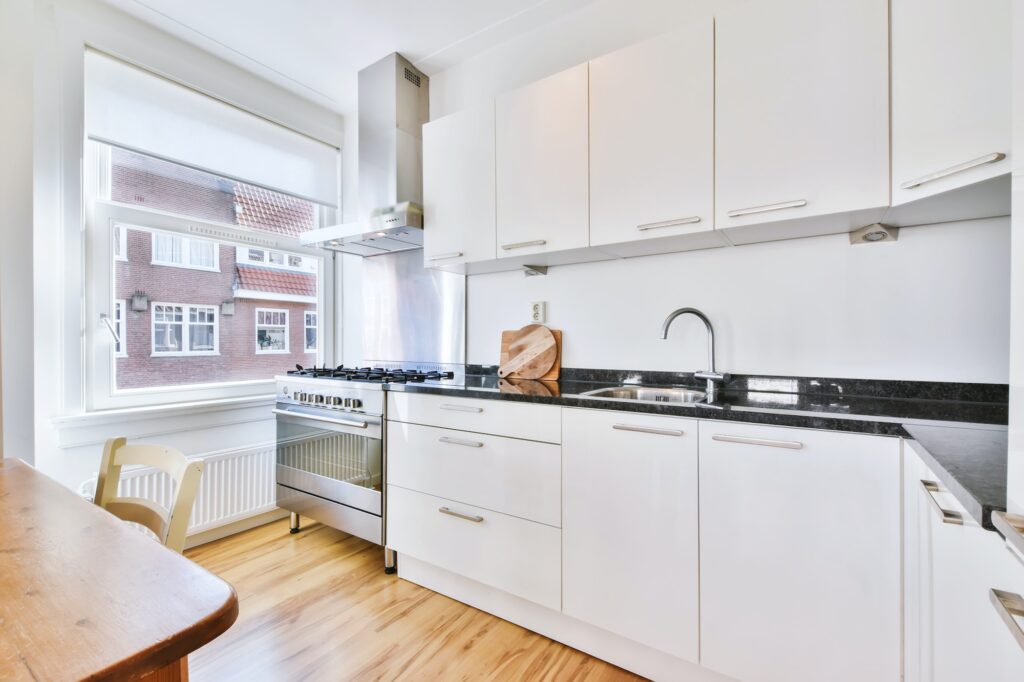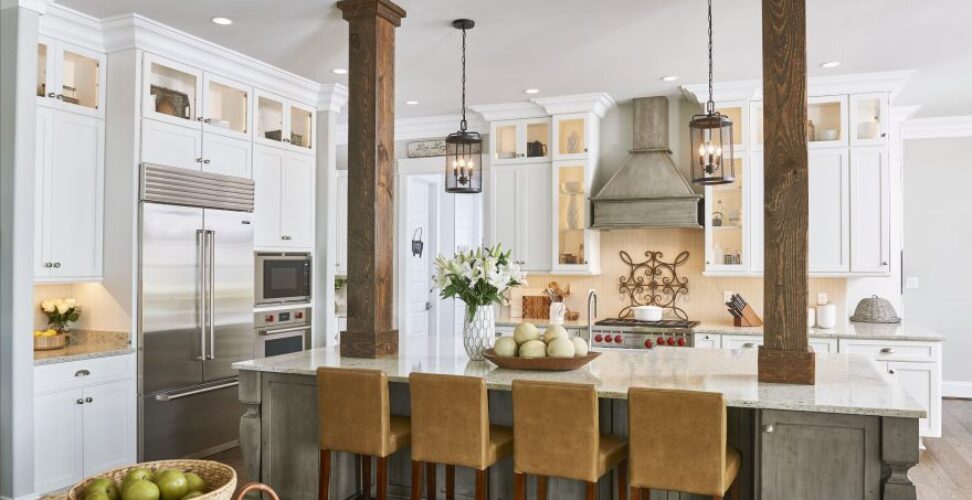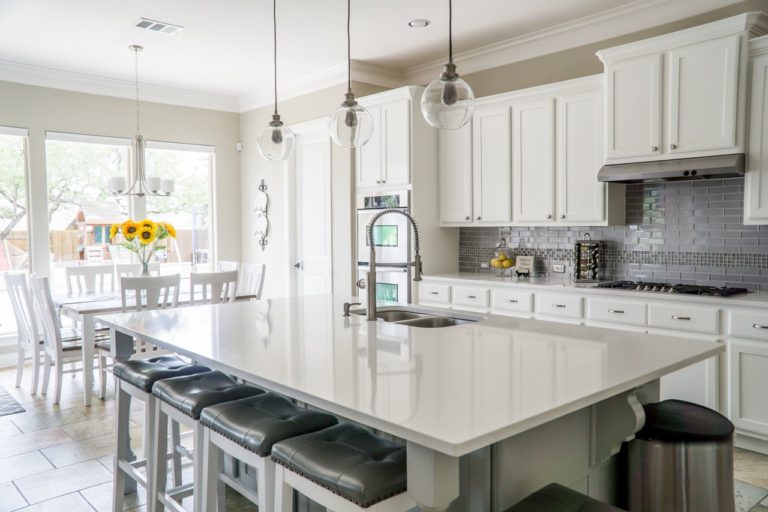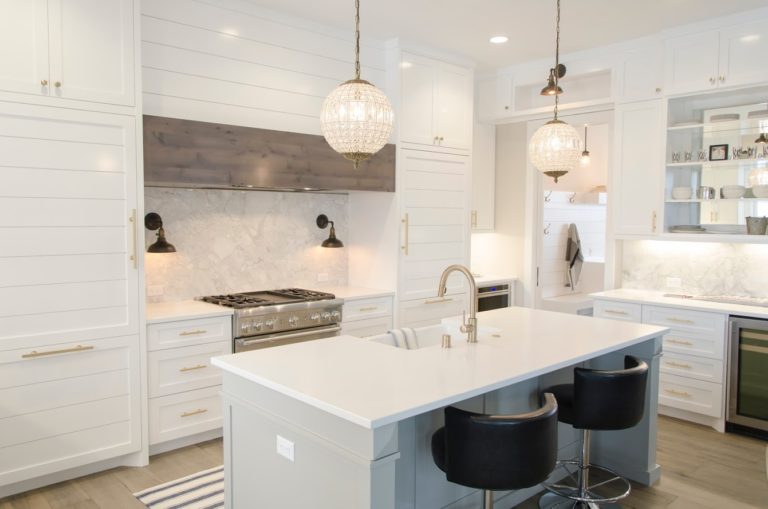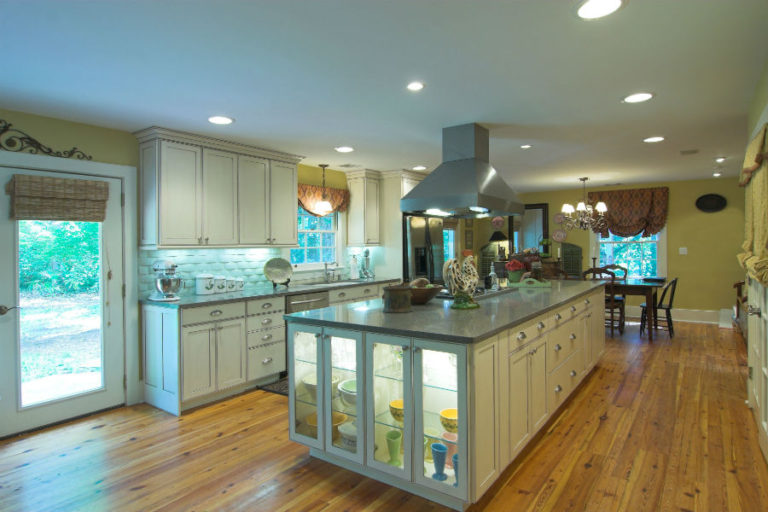The Pros and Cons of Semi-Custom Kitchen Cabinets vs. Stock Cabinets
Custom cabinets are built to your specifications and offer the ultimate in personalization, while stock cabinets come in pre-made sizes and styles that are readily available. Let’s explore the
pros and cons of each option to help you make the best choice for your home.
Pros of Semi-Custom Kitchen Cabinets:
Personalization: With semi-custom cabinets, you can choose every detail, from the wood species and finish to the door style and hardware. This means your cabinets will be unique and tailored to your taste and needs.
Quality: Custom cabinets are typically made with high-quality materials and craftsmanship, which means they are built to last. You can also work with a skilled designer or cabinet maker to ensure the perfect fit and function for your space.
Functionality: Custom cabinets can be designed to maximize storage and organization, with features like pull-out drawers, spice racks, and built-in appliances.
- Pull-out spice racks: Instead of keeping spices in a separate cabinet or drawer, pull-out spice racks can be integrated into a cabinet for easy access and organization.
- Built-in wine racks: For wine enthusiasts, built-in wine racks are a great way to store and display bottles, and can be customized to fit the space and style of the kitchen.
- Corner cabinets with lazy susans: Corner cabinets can be tricky to access, but a lazy susan mechanism allows for easy rotation and access to all items stored in the cabinet.
- Roll-out trays: Roll-out trays can be added to cabinets to make accessing items stored in the back easier, and can also be customized to fit the specific size and shape of the items being stored.
- In-cabinet lighting: Adding lighting to the inside of cabinets can help illuminate items stored inside and make it easier to find what you need, especially in low-light conditions.
- Pull-out cutting boards: Instead of having a separate cutting board taking up counter space, a pull-out cutting board can be integrated into a cabinet for easy access and storage.
- Trash and recycling centers: Cabinets with built-in trash and recycling bins can help keep the kitchen tidy and organized, and also provide a discreet place to store waste.
Cons of Semi-Custom Kitchen Cabinets:
Cost: Semi-Custom cabinets are typically more expensive than stock cabinets due to the extra time and labor required to build them. This can be a significant factor if you’re on a tight budget.
Time: It can sometimes take longer to build and install, which means your kitchen renovation project may be delayed. If you’re on a tight timeline, stock cabinets may be a better option.
Pros of Stock Kitchen Cabinets:
Affordability: Stock cabinets are typically more affordable than custom cabinets, making them a great option if you’re on a tight budget. This is typically a short term solution though.
Quick Delivery: Stock cabinets are readily available and can be delivered quickly, which means you can start your kitchen renovation project sooner.
Standard Sizing: Stock cabinets come in standard sizes, which means they can be easily replaced or added to if needed. This is great for new construction in track homes and apartments.
Cons of Stock Kitchen Cabinets:
Limited Personalization: Stock cabinets come in pre-made sizes and styles, which means you may not be able to find the exact look you want. This can limit your design options and personalization.Unless you have a galley kitchen, your options may be very limited in terms of color, layout, finish, and quality.
Cookie Cutter Layout: Stock cabinets take the personality out of your kitchen. Think back to a college apartment you’ve been in. All the kitchens looked the same. The decor might have varied slightly, but they were functionally the same. The cookie cutter layout prevents homeowners from adding great features like lazy susan’s, charging towers, or pull out spice racks to their kitchen.
Quality: While there are many high-quality stock cabinets available, most stock cabinets are manufactured overseas and some lower-priced options may be made with cheaper materials. Most stock cabinets are made of pressed wood, MD, or plywood topped by a layer of paper coloured with a heat-fused melamine resin.
Functionality: Stock cabinets may not offer the same level of customization and functionality as custom cabinets, with limited options for storage and organization.
In conclusion, the choice between custom and stock kitchen cabinets ultimately depends on your budget, timeline, and personalization needs. While custom cabinets offer unlimited design options and high-quality craftsmanship, they come with a higher price tag and longer installation time. Stock cabinets, on the other hand, are more affordable and readily available but may lack the personalization and functionality of custom cabinets. Take the time to weigh the pros and cons of each option to find the best fit for your kitchen renovation project.
